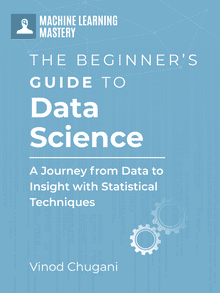Linear regression models are foundational in machine learning. Merely fitting a straight line and reading the coefficient tells a lot. But how do we extract and interpret the coefficients from these models to understand their impact on predicted outcomes? This post will demonstrate how one can interpret coefficients by exploring various scenarios. We’ll explore the analysis of a single numerical feature, examine the role of categorical variables, and unravel the complexities introduced when these features are combined. Through this exploration, we aim to equip you with the skills needed to leverage linear regression models effectively, enhancing your analytical capabilities across different data-driven domains.

Interpreting Coefficients in Linear Regression Models
Photo by Zac Durant. Some rights reserved.
Let’s get started.
Overview
This post is divided into three parts; they are:
- Interpreting Coefficients in Linear Models with a Single Numerical Feature
- Interpreting Coefficients in Linear Models with a Single Categorical Feature
- Discussion on Combining Numerical and Categorical Features
Interpreting Coefficients in Linear Models with a Single Numerical Feature
In this section, we focus on a single numerical feature from the Ames Housing dataset, “GrLivArea” (above-ground living area in square feet), to understand its direct impact on “SalePrice”. We employ K-Fold Cross-Validation to validate our model’s performance and extract the coefficient of “GrLivArea”. This coefficient estimates how much the house price is expected to increase for every additional square foot of living area under the assumption that all other factors remain constant. This is a fundamental aspect of linear regression analysis, ensuring that the effect of “GrLivArea” is isolated from other variables.
Here is how we set up our regression model to achieve this:
|
1 2 3 4 5 6 7 8 9 10 11 12 13 14 15 16 17 18 19 20 21 22 23 24 25 26 27 28 29 30 31 |
# Set up to obtain CV model performance and coefficient using K-Fold import pandas as pd import numpy as np from sklearn.linear_model import LinearRegression from sklearn.model_selection import KFold
Ames = pd.read_csv(“Ames.csv”) X = Ames[[“GrLivArea”]].values # get 2D matrix y = Ames[“SalePrice”].values # get 1D vector
model = LinearRegression() kf = KFold(n_splits=5) coefs = [] scores = []
# Manually perform K-Fold Cross-Validation for fold, (train_index, test_index) in enumerate(kf.split(X), start=1): # Split the data into training and testing sets X_train, X_test = X[train_index], X[test_index] y_train, y_test = y[train_index], y[test_index]
# Fit the model, obtain fold performance and coefficient model.fit(X_train, y_train) scores.append(model.score(X_test, y_test)) coefs.append(model.coef_)
mean_score = np.mean(scores) print(f“Mean CV R² = {mean_score:.4f}”)
mean_coefs = np.mean(coefs) print(f“Mean Coefficient = {mean_coefs:.4f}”) |
The output from this code block provides two key pieces of information: the mean R² score across the folds and the mean coefficient for “GrLivArea.” The R² score gives us a general idea of how well our model fits the data across different subsets, indicating the model’s consistency and reliability. Meanwhile, the mean coefficient quantifies the average effect of “GrLivArea” on “SalePrice” across all the validation folds.
|
Mean CV R² = 0.5127 Mean Coefficient = 110.5214 |
The coefficient of “GrLivArea” can be directly interpreted as the price change per square foot. Specifically, it indicates that for each square foot increase in “GrLivArea,” the sale price of the house is expected to rise by approximately $110.52 (not to be confused with the price per square foot since the coefficient refers to the marginal price). Conversely, a decrease in living area by one square foot would typically lower the sale price by the same amount.
Interpreting Coefficients in Linear Models with a Single Categorical Feature
While numerical features like “GrLivArea” can be directly used in our regression model, categorical features require a different approach. Proper encoding of these categorical variables is crucial for accurate model training and ensuring the results are interpretable. In this section, we’ll explore One Hot Encoding—a technique that prepares categorical variables for linear regression by transforming them into a format that is interpretable within the model’s framework. We will specifically focus on how to interpret the coefficients that result from these transformations, including the strategic selection of a reference category to simplify these interpretations.
Choosing an appropriate reference category when applying One Hot Encoding is crucial as it sets the baseline against which other categories are compared. This baseline category’s mean value often serves as the intercept in our regression model. Let’s explore the distribution of sale prices across neighborhoods to select a reference category that will make our model both interpretable and meaningful:
|
# Rank neighborhoods by their mean sale price Ames = pd.read_csv(“Ames.csv”) neighbor_stats = Ames.groupby(“Neighborhood”)[“SalePrice”].agg([“count”, “mean”]).sort_values(by=“mean”) print(neighbor_stats.round(0).astype(int)) |
This output will inform our choice by highlighting the neighborhoods with the lowest and highest average prices, as well as indicating the neighborhoods with sufficient data points (count) to ensure robust statistical analysis:
|
1 2 3 4 5 6 7 8 9 10 11 12 13 14 15 16 17 18 19 20 21 22 23 24 25 26 27 28 29 30 |
count mean Neighborhood MeadowV 34 96836 BrDale 29 106095 IDOTRR 76 108103 BrkSide 103 126030 OldTown 213 126939 Edwards 165 133152 SWISU 42 133576 Landmrk 1 137000 Sawyer 139 137493 NPkVill 22 140743 Blueste 10 143590 NAmes 410 145087 Mitchel 104 162655 SawyerW 113 188102 Gilbert 143 189440 NWAmes 123 190372 Greens 8 193531 Blmngtn 23 196237 CollgCr 236 198133 Crawfor 92 202076 ClearCr 40 213981 Somerst 143 228762 Timber 54 242910 Veenker 23 251263 GrnHill 2 280000 StoneBr 43 305308 NridgHt 121 313662 NoRidge 67 326114 |
Choosing a neighborhood like “MeadowV” as our reference sets a clear baseline, interpreting other neighborhoods’ coefficients straightforward: they show how much more expensive houses are than “MeadowV”.
Having identified “MeadowV” as our reference neighborhood, we are now ready to apply One Hot Encoding to the “Neighborhood” feature, explicitly excluding “MeadowV” to establish it as our baseline in the model. This step ensures that all subsequent neighborhood coefficients are interpreted in relation to “MeadowV,” providing a clear comparative analysis of house pricing across different areas. The next block of code will demonstrate this encoding process, fit a linear regression model using K-Fold cross-validation, and calculate the average coefficients and Y-intercept. These calculations will help quantify the additional value or deficit associated with each neighborhood compared to our baseline, offering actionable insights for market evaluation.
|
1 2 3 4 5 6 7 8 9 10 11 12 13 14 15 16 17 18 19 20 21 22 23 24 25 26 27 28 29 30 31 32 33 34 35 36 37 38 39 40 41 42 43 44 45 46 47 48 49 |
# Build on initial set up and block of code above # Import OneHotEncoder to preprocess a categorical feature from sklearn.preprocessing import OneHotEncoder
# One Hot Encoding for “Neighborhood”, Note: drop=[“MeadowV”] encoder = OneHotEncoder(sparse=False, drop=[“MeadowV”]) X = encoder.fit_transform(Ames[[“Neighborhood”]]) y = Ames[“SalePrice”].values
# Setup KFold and initialize storage kf = KFold(n_splits=5) scores = [] coefficients = [] intercept = []
# Perform the KFold cross-validation for train_index, test_index in kf.split(X): X_train, X_test = X[train_index], X[test_index] y_train, y_test = y[train_index], y[test_index]
model = LinearRegression() model.fit(X_train, y_train)
# Append the results for each fold scores.append(model.score(X_test, y_test)) coefficients.append(model.coef_) intercept.append(model.intercept_)
mean_score = np.mean(scores) print(f“Mean CV R² = {mean_score:.4f}”) mean_coefficients = np.mean(coefficients, axis=0) mean_intercept = np.mean(intercept) print(f“Mean Y-intercept = {mean_intercept:.0f}”)
# Retrieve neighborhood names from the encoder, adjusting for the dropped category neighborhoods = encoder.categories_[0] if “MeadowV” in neighborhoods: neighborhoods = [name for name in neighborhoods if name != “MeadowV”]
# Create a DataFrame to nicely display neighborhoods with their average coefficients import pandas as pd
coefficients_df = pd.DataFrame({ “Neighborhood”: neighborhoods, “Average Coefficient”: mean_coefficients.round(0).astype(int) })
# Print or return the DataFrame print(coefficients_df.sort_values(by=“Average Coefficient”).reset_index(drop=True)) |
The mean R² will remain consistent at 0.5408 regardless of what feature we “dropped” when we One Hot Encoded.
The Y-intercept provides a specific quantitative benchmark. Representing the average sale price in “MeadowV,” this Y-intercept forms the foundational price level against which all other neighborhoods’ premiums or discounts are measured.
|
1 2 3 4 5 6 7 8 9 10 11 12 13 14 15 16 17 18 19 20 21 22 23 24 25 26 27 28 29 30 31 |
Mean CV R² = 0.5408 Mean Y-intercept = 96827
Neighborhood Average Coefficient 0 BrDale 9221 1 IDOTRR 11335 2 BrkSide 29235 3 OldTown 30092 4 Landmrk 31729 5 Edwards 36305 6 SWISU 36848 7 Sawyer 40645 8 NPkVill 43988 9 Blueste 46388 10 NAmes 48274 11 Mitchel 65851 12 SawyerW 91252 13 Gilbert 92627 14 NWAmes 93521 15 Greens 96641 16 Blmngtn 99318 17 CollgCr 101342 18 Crawfor 105258 19 ClearCr 116993 20 Somerst 131844 21 Timber 146216 22 Veenker 155042 23 GrnHill 183173 24 StoneBr 208096 25 NridgHt 216605 26 NoRidge 229423 |
Each neighborhood’s coefficient, calculated relative to “MeadowV,” reveals its premium or deficit in house pricing. By setting “MeadowV” as the reference category in our One Hot Encoding process, its average sale price effectively becomes the intercept of our model. The coefficients calculated for other neighborhoods then measure the difference in expected sale prices relative to “MeadowV.” For instance, a positive coefficient for a neighborhood indicates that houses there are more expensive than those in “MeadowV” by the coefficient’s value, assuming all other factors are constant. This arrangement allows us to directly assess and compare the impact of different neighborhoods on the “SalePrice,” providing a clear and quantifiable understanding of each neighborhood’s relative market value.
Discussion on Combining Numerical and Categorical Features
So far, we have examined how numerical and categorical features influence our predictions separately. However, real-world data often require more sophisticated models that can handle multiple types of data simultaneously to capture the complex relationships within the market. To achieve this, it is essential to become familiar with tools like the ColumnTransformer, which allows for the simultaneous processing of different data types, ensuring that each feature is optimally prepared for modeling. Let’s now demonstrate an example where we combine the living area (“GrLivArea”) with the neighborhood classification to see how these factors together affect our model performance.
|
1 2 3 4 5 6 7 8 9 10 11 12 13 14 15 16 17 18 19 20 21 22 23 24 25 26 27 28 29 30 31 32 33 34 35 36 37 38 39 40 41 42 43 44 45 46 47 48 49 50 51 52 53 54 55 56 57 58 59 60 61 62 63 64 65 66 67 68 69 70 71 |
# Import the necessary libraries import pandas as pd import numpy as np from sklearn.model_selection import KFold from sklearn.linear_model import LinearRegression from sklearn.preprocessing import OneHotEncoder from sklearn.compose import ColumnTransformer
# Load data Ames = pd.read_csv(“Ames.csv”)
# Select features and target features = Ames[[“GrLivArea”, “Neighborhood”]] target = Ames[“SalePrice”]
# Preprocess features using ColumnTransformer preprocessor = ColumnTransformer( transformers=[ (“num”, “passthrough”, [“GrLivArea”]), (“cat”, OneHotEncoder(sparse=False, drop=[“MeadowV”], handle_unknown=“ignore”), [“Neighborhood”]) ])
# Fit and transform the features X_transformed = preprocessor.fit_transform(features) feature_names = [“GrLivArea”] + list(preprocessor.named_transformers_[“cat”].get_feature_names_out())
# Initialize KFold kf = KFold(n_splits=5)
# Initialize variables to store results coefficients_list = [] intercepts_list = [] scores = []
# Perform the KFold cross-validation for train_index, test_index in kf.split(X_transformed): X_train, X_test = X_transformed[train_index], X_transformed[test_index] y_train, y_test = target.iloc[train_index], target.iloc[test_index]
# Initialize the linear regression model model = LinearRegression()
# Fit the model on the training data model.fit(X_train, y_train)
# Store coefficients and intercepts coefficients_list.append(model.coef_) intercepts_list.append(model.intercept_)
# Evaluate the model scores.append(model.score(X_test, y_test))
# Calculate the mean of scores, coefficients, and intercepts average_score = np.mean(scores) average_coefficients = np.mean(coefficients_list, axis=0) average_intercept = np.mean(intercepts_list)
# Display the average R² score and Y-Intercept across all folds # The Y-Intercept represents the baseline sale price in “MeadowV” with no additional living area print(f“Mean CV R² Score of Combined Model: {average_score:.4f}”) print(f“Mean Y-intercept = {average_intercept:.0f}”)
# Create a DataFrame for the coefficients df_coefficients = pd.DataFrame({ “Feature”: feature_names, “Average Coefficient”: average_coefficients }).sort_values(by=“Average Coefficient”).reset_index(drop=True)
# Display the DataFrame print(“Coefficients for Combined Model:”) print(df_coefficients) |
The code above should output:
|
1 2 3 4 5 6 7 8 9 10 11 12 13 14 15 16 17 18 19 20 21 22 23 24 25 26 27 28 29 30 31 32 33 |
Mean CV R² Score of Combined Model: 0.7375 Mean Y-intercept = 11786
Coefficients for Combined Model: Feature Average Coefficient 0 Neighborhood_SWISU -3728.929853 1 Neighborhood_IDOTRR -1498.971239 2 GrLivArea 78.938757 3 Neighborhood_OldTown 2363.805796 4 Neighborhood_BrDale 6551.114637 5 Neighborhood_BrkSide 16521.117849 6 Neighborhood_Landmrk 16921.529665 7 Neighborhood_Edwards 17520.110407 8 Neighborhood_NPkVill 30034.541748 9 Neighborhood_NAmes 31717.960146 10 Neighborhood_Sawyer 32009.140024 11 Neighborhood_Blueste 39908.310031 12 Neighborhood_NWAmes 44409.237736 13 Neighborhood_Mitchel 48013.229999 14 Neighborhood_SawyerW 48204.606372 15 Neighborhood_Gilbert 49255.248193 16 Neighborhood_Crawfor 55701.500795 17 Neighborhood_ClearCr 61737.497483 18 Neighborhood_CollgCr 69781.161291 19 Neighborhood_Blmngtn 72456.245569 20 Neighborhood_Somerst 90020.562168 21 Neighborhood_Greens 90219.452164 22 Neighborhood_Timber 97021.781128 23 Neighborhood_Veenker 98829.786236 24 Neighborhood_NoRidge 120717.748175 25 Neighborhood_StoneBr 147811.849406 26 Neighborhood_NridgHt 150129.579392 27 Neighborhood_GrnHill 157858.199004 |
Combining “GrLivArea” and “Neighborhood” into a single model has significantly improved the R² score, rising to 0.7375 from the individual scores of 0.5127 and 0.5408, respectively. This substantial increase illustrates that integrating multiple data types provides a more accurate reflection of the complex factors influencing real estate prices.
However, this integration introduces new complexities into the model. The interaction effects between features like “GrLivArea” and “Neighborhood” can significantly alter the coefficients. For instance, the coefficient for “GrLivArea” decreased from 110.52 in the single-feature model to 78.93 in the combined model. This change illustrates how the value of living area is influenced by the characteristics of different neighborhoods. Incorporating multiple variables requires adjustments in the coefficients to account for overlapping variances between predictors, resulting in coefficients that often differ from those in single-feature models.
The mean Y-intercept calculated for our combined model is $11,786. This value represents the predicted sale price for a house in the “MeadowV” neighborhood with the base living area (as accounted for by “GrLivArea”) adjusted to zero. This intercept serves as a foundational price point, enhancing our interpretation of how different neighborhoods compare to “MeadowV” in terms of cost, once adjusted for the size of the living area. Each neighborhood’s coefficient, therefore, informs us about the additional cost or savings relative to our baseline, “MeadowV,” providing clear and actionable insights into the relative value of properties across different areas.
Further Reading
APIs
Tutorials
Ames Housing Dataset & Data Dictionary
Summary
This post has guided you through interpreting coefficients in linear regression models with clear, practical examples using the Ames Housing dataset. We explored how different types of features—numerical and categorical—affect the predictability and clarity of models. Moreover, we addressed the challenges and benefits of combining these features, especially in the context of interpretation.
Specifically, you learned:
- The Direct Impact of Single Numerical Features: How the “GrLivArea” coefficient directly quantifies the increase in “SalePrice” for each additional square foot, providing a clear measure of its predictive value in a straightforward model.
- Handling Categorical Variables: The importance of One Hot Encoding in dealing with categorical features like “Neighborhood”, illustrating how choosing a baseline category impacts the interpretation of coefficients and sets a foundation for comparison across different areas.
- Combining Features to Enhance Model Performance: The integration of “GrLivArea” and “Neighborhood” not only improved the predictive accuracy (R² score) but also introduced a complexity that affects how each feature’s coefficient is interpreted. This part emphasized the trade-off between achieving high predictive accuracy and maintaining model interpretability, which is crucial for making informed decisions in the real estate market.
Do you have any questions? Please ask your questions in the comments below, and I will do my best to answer.




